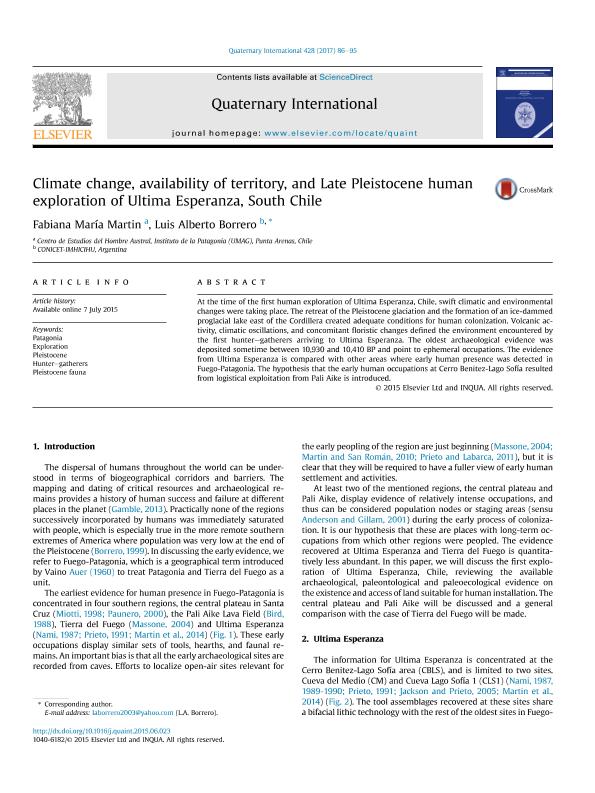Artículo
Climate change, availability of territory, and Late Pleistocene human exploration of Ultima Esperanza, South Chile
Fecha de publicación:
01/2017
Editorial:
Pergamon-Elsevier Science Ltd
Revista:
Quaternary International
ISSN:
1040-6182
Idioma:
Inglés
Tipo de recurso:
Artículo publicado
Clasificación temática:
Resumen
At the time of the first human exploration of Ultima Esperanza, Chile, swift climatic and environmental changes were taking place. The retreat of the Pleistocene glaciation and the formation of an ice-dammed proglacial lake east of the Cordillera created adequate conditions for human colonization. Volcanic activity, climatic oscillations, and concomitant floristic changes defined the environment encountered by the first hunter–gatherers arriving to Ultima Esperanza. The oldest archaeological evidence was deposited sometime between 10,930 and 10,410 BP and point to ephemeral occupations. The evidence from Ultima Esperanza is compared with other areas where early human presence was detected in Fuego-Patagonia. The hypothesis that the early human occupations at Cerro Benitez-Lago Sofía resulted from logistical exploitation from Pali Aike is introduced.
Palabras clave:
Exploration
,
Hunter-Gatherers
,
Patagonia
,
Pleistocene
,
Pleistocene Fauna
Archivos asociados
Licencia
Identificadores
Colecciones
Articulos(IMHICIHU)
Articulos de INST.MULTIDISCIP.DE HISTORIA Y CS.HUMANAS
Articulos de INST.MULTIDISCIP.DE HISTORIA Y CS.HUMANAS
Citación
Martin, Fabiana Maria; Borrero, Luis Alberto; Climate change, availability of territory, and Late Pleistocene human exploration of Ultima Esperanza, South Chile; Pergamon-Elsevier Science Ltd; Quaternary International; 428; 1-2017; 86-95
Compartir
Altmétricas




